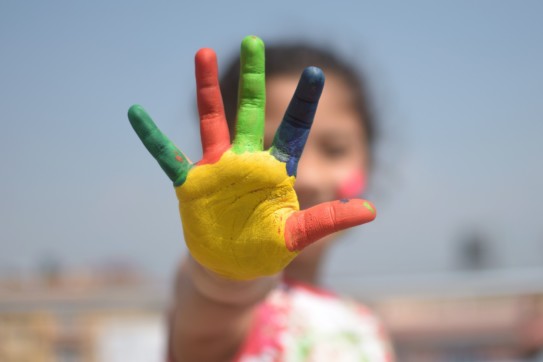2020 Round-up: The Top 5 Lessons for Canadian Nonprofits and Charities

As we prepare to begin a new year, one thing is clear: 2020 changed the way we look at the world. With many shifts in the charitable and nonprofit sector over the last several months, organizations have re-evaluated their strategies, re-imagined their events, and re-shaped their fundraising campaigns. Along with the challenges faced by the social good community, there have also been inspiring moments of collaboration and opportunity. With the end of the year approaching, we pause to look back on the valuable lessons learned from our top thought leadership events of 2020, many of which will continue to be relevant as we enter 2021.
In the April edition of Blackbaud Canada’s True North Speaker Series, Certified Fundraising Executive Sam Laprade explored what she called a fundraising “sweet spot” — the intersection of data, stewardship, and storytelling — and how any organization can find unrealized potential within their existing donor base.
Laprade emphasized the use of analytics to tap these opportunities, saying that “donors speak to us through the data”. What can that data tell us? It can tell us how engaged a donor is, and what motivates their giving behaviour. For example, one-time donors may have made an initial contribution in memorium, or as part of a peer fundraising campaign with a cause as the beneficiary. Some single-gift donors may be interested in continuing their support through monthly giving, or an existing monthly donor who is already demonstrably connected to a cause may be interested in major or planned gifts.
For more insights on how to maximize your existing donor base, watch the full session on-demand.
This June, for the first time, Blackbaud Canada brought together four executives from the sector to share critical learnings and best practices in the Digital Executive Roundtable. Presented in partnership with Imagine Canada, and hosted by their President & CEO, Bruce MacDonald, this panel explored critical learnings and best practices for organizations to succeed, even in the midst of uncertainty. Speakers Tania Little of Food Banks Canada, Ronan Ryan of the Canadian Red Cross and Ted Garrard of SickKids Foundation focused the conversation on fundraising, analytics, and marketing, providing key takeaways for organizations of all sizes to remain resilient.
Some of the panel’s main themes included building a flexible strategy, the importance of communicating with donors, the increasingly relevant role of technology in fundraising, and working with partners for the common good. All speakers agreed on the word of the moment – agility.
“Strategy remains the same. What changes is the how.” – Ronan Ryan, Chief Marketing and Development Officer, Canadian Red Cross
If you missed the session live, you can watch it in full here.
In this panel, the top findings from a research study on multicultural donors by Imagine Canada were discussed with leaders from the sector. Host Bruce MacDonald of Imagine Canada, Bobby Sahni of Ethnicity Matters, Queenie Choo of S.U.C.C.E.S.S. Foundation, Moezine Hasham of Hockey 4 Youth and Ahtsham Yousaf of Blackbaud Canada highlighted the importance of immigrant communities and the untapped potential they hold for fundraisers.
With 320,000 newcomers to the country each year, MacDonald stated that “understanding and engaging with Canada’s immigrant mosaic is no longer a luxury – it is a business imperative”.
Findings from the study demonstrated that these are generous communities with high rates of giving. Of the study participants, roughly 75% of newcomers to Canada reported donating to charitable causes, particularly those with which they felt a personal connection. With this knowledge, it was made clear that fundraisers should not overlook the value of engaging with these diverse communities in a meaningful and thoughtful way.
Highlights from the study were summarized in a post by Imagine Canada’s Emilie Pontbriand with the full study available here. The panel can be watched in full on-demand.
In this timely session, celebrated major-gift maven Emma Lewzey, CFRP and Founder of Blue Sky Philanthropy dispelled some of the most common myths and misconceptions about major gifts that hold organizations back from securing bigger gifts. Lewzey also provided proven strategies to help organizations secure more five, six and seven figure gifts.
To recap, here are the top five myths that were explored in the session.
-
- Myth #1: Big donors are somewhere “out there”
- Myth #2: You should pause on major gifts and wait for things to get better
- Myth #3: You can’t raise major gifts without face-to-face meetings
- Myth #4: Video meetings will look “unprofessional” to major donors
- Myth #5: You’re too small to raise major gifts
If the above sounds familiar, you can read more about Emma’s remedies for these myths in her recent post or watch the full session on-demand.
Last month, we had the pleasure of hosting two experts in Legacy Giving, Fraser Green, Founder of Good Works and Paul Nazareth, VP of Education & Development at the Canadian Association of Gift Planners (CAGP) to explore the science behind bequests.
Green discussed the philosophy of life in three acts; act one focused on growth, act two focused on achievement and act three, focused largely on introspection. He went on to identify, unsurprisingly, that 86% of legacy givers are within the final act, around age 60+.
Citing the research of Dr. Russell James of Texas Tech University, Green explained that when the human brain was studied in relation to legacy gifts, subjects showed activity not in the empathetic part of the brain, but rather in the autobiographical part. In other words, legacy giving is about individuals telling their personal stories in a desire to live on posthumously through bequests.
“We are doing something much more powerful than just talking about money…Legacy giving, if done properly, is a deeply profound, deeply human, deeply emotional and deeply spiritual act. It deserves great respect.” – Fraser Green, Good Works
Paul Nazareth underscored the both the importance of legacy gifts and the monumental opportunity that fundraisers have in Canada, stating that, “We have the largest amount of Canadians, with the least amount of kids in the history of this country. We have a ton of Canadians for whom their legacies will be charity”. He went on to emphasize the importance of stewardship for legacy donors and in giving them space to tell their stories “Every donor has a legacy in their heart… we are helping them plant roots of a garden they will never see”.
To gain additional insights from this session, watch now on-demand.
These popular events helped to shed light on the unique challenges and opportunities we collectively faced in 2020. With a new year on the horizon, we look forward to supporting you and your cause with more trending topics and notable thought leaders in Blackbaud Canada’s True North Speaker Series and Digital Roundtable Series.
“See” you next year!
